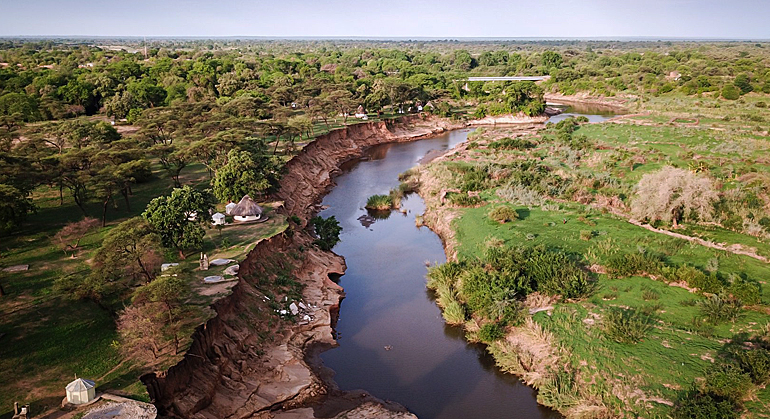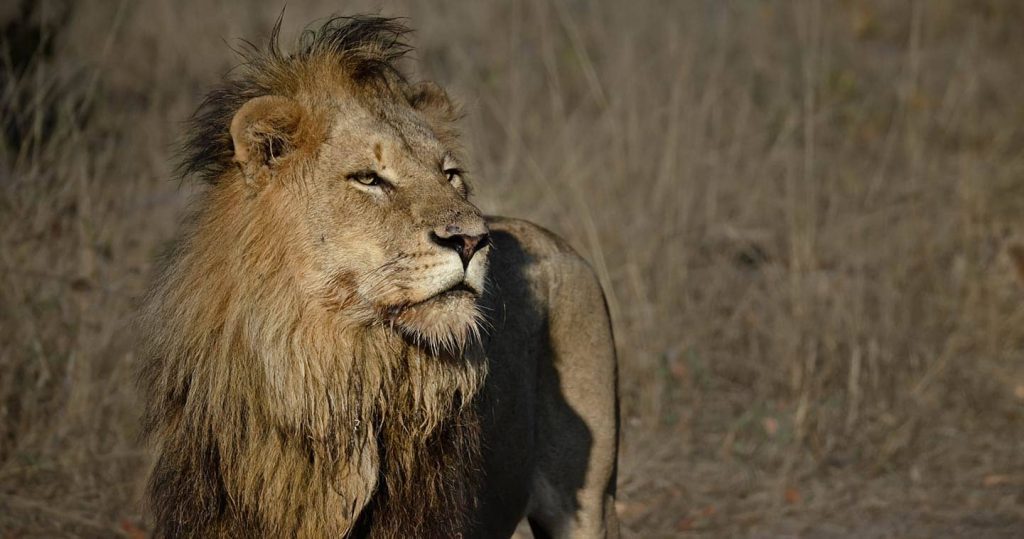PEOPLE VS BEASTS: WHOSE LAND REALLY?

The horizon sky is a searing purple, the residue of a blistering hot summer day. A still coolness sets upon the lone, rustic village situated a “shouting” distance from the Chizarira National Park in the southern part of the Zambezi Escarpment, West of Zimbabwe.
Fires flicker and twinkle through partially opened doors of cooking huts, an appetizing aroma of dried fish and vegetables permeates the air. Fathers and other senior members of the family exit the huts to sit on low stools in the eaves of the round-shaped rondavels, giving mothers and daughters the space, they need in the supper-making bustle currently ensuing on open fires.
Apart from the occasional clattering sound of a pot, or the shout of a mother to a misbehaving kid, there’s tranquillity and peace in the air. A typical evening for the village.
Suddenly, a loud, blunt noise of something hollow being frantically beaten harrows through the tranquillity, and within seconds, the whole village atmosphere becomes saturated with a discordance of “drumbeats”, whistles, and shouts. The first blunt noise was enough to alert the whole village of the unwelcome intruder, or intruders, as in this case, that have set foot on their land; a herd of elephant!
Everyone joins in this spirited exercise of scaring away the jumbos by any means necessary. Old pots are clanked together, empty oil drums are gonged with sticks, women yell in their loudest voices.
For a moment, it appears all the banging and screaming will be in vain. The elephants react to all this with arrogant nonchalance and remain put under the dead Marula tree, a few meters from a homestead. The villagers, determined to drive the intruders away from their homes, up the tempo, and after five minutes, they do score victory.
The humongous mammals, unable to bear the noise anymore, fall into step and trek away into the night, gallivanting in the direction of a popular Marula groove near river Lwizikululu.
Peace and tranquillity take over the village again, and everyone returns to where they were prior to the commotion.
Again, a typical evening for the village, just like any other community within the vicinity of a wildlife habitat across Zimbabwe.
Cases of wildlife straying into human communities are fast becoming common like the rising and setting of the sun. And, worryingly, most of these encounters are turning tragic.
The Mirror newspaper reported of a 50-year-old woman, Monica Mukamba, of Bikita in Masvingo, who sustained broken ribs and had to be hospitalised after a deranged attack by a buffalo. The beast, part of a herd that was spotted in Buhera district on the 13th of March, is yet to be captured by the Zim Parks. Bikita is close to the Save Valley Conservancy, a wildlife haven.
Prior to the Bikita incident, the ZBC reported of two problem lions that were put down by rangers in Hwange after going on a killing spree of livestock in the locality.
These examples point towards an increased contact between people and animals in communities situated near wildlife habitats. And, as these contacts become more frequent, people develop hostility towards wildlife, setting the stage for a bloody war between man and beast.
But authorities, working together with specialised agencies, have been – for years, trying to mitigate this conflict through programs that encourage sustainable coexistence between humans and wildlife.
In January 2023, the African Wildlife Foundation (AWF) released a statement urging communities in wildlife areas to be proactive and take ownership of conservation projects to reap benefits of cohabiting with wildlife in their areas.
AWF, which has been on the forefront of championing wildlife conservation efforts and empowering local communities across Africa, lamented the scourge of deforestation in wildlife rich areas, which has directly contributed to the rising conflict over resources between people and animals.
“The rate at which the impoverished communities are collecting firewood is unsustainable, and their actions are creating food security issues. With the damaged soil unable to grow crops, people continue to turn to poaching to eat and earn income”, says AWF on their website.
There are other initiatives like the Communal Areas Management Programme for Indigenous Resources (CAMPFIRE), whose main mandate is to help manage indigenous resources for the direct benefit of rural communities.
However, the effective implementation of these programmes remains a challenge, as many locals still feel they are not benefitting at all from their local wealth.
Romeo Mugande, Ward 17 Councillor, Binga, is one of the many community voices who feel there’s a lot more that can be done by the authorities to effectively manage the jostle for land and resources between people and animals.
“The government should help by rehabilitating the old fence and also providing enough equipment to the rangers”, Mugande tells My Afrika Magazine in an interview.
The 49-year-old Mugande stays with his family of eight in a village located fifteen kilometers away from Chizarira National Park, a lion haven.
Their homestead gets frequently “visited” by elephants, lions, and hyenas. They scare away the intruders by beating drums and burning pepper.
“We report each incident of stray animals to our CAMPFIRE resource monitor and even phoning the National Parks if possible”, he says.
Binga district, just like Kariba town, is in the way of a traditional animal corridor. Human communities must learn to co-exist with their counterparts from the quadrupled community as a permanent solution to the turf war.
It’s about humans, as the smarter specie, accepting the fact that it’s them who came to live in the wilderness after the animals, and thus must find sustainable, safe ways to cohabit.






